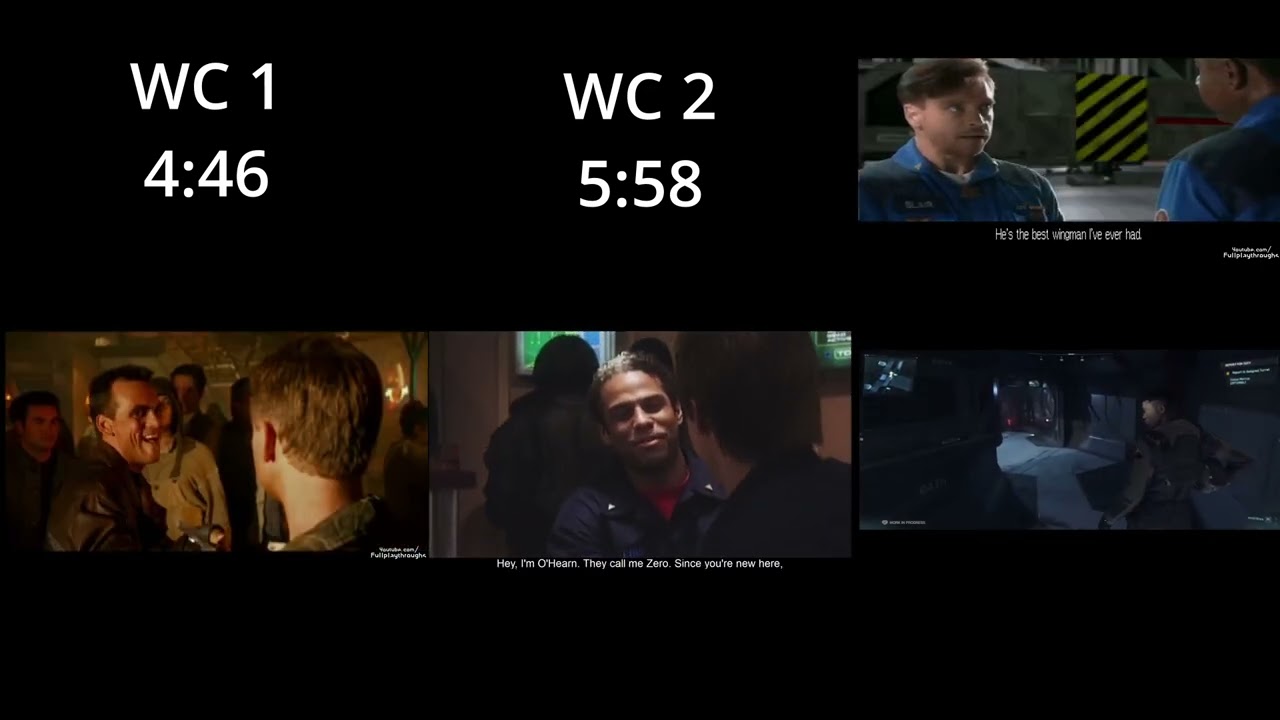In the video, Daniel Raymond analyzes the introduction length of “Squadron 42” (SQ42) compared to earlier Wing Commander games, revealing that its 12-minute intro is relatively short within the series context. He argues that the pacing aligns with Chris Roberts’ design philosophy, emphasizing character and narrative development over immediate action, and encourages viewers to appreciate the artistic choices in game design.
In the video, Daniel Raymond discusses the introduction length of “Squadron 42” (SQ42) in comparison to previous games in the Wing Commander series, particularly focusing on the opinions surrounding its pacing. He acknowledges that some players find the lengthy cutscenes before engaging in combat to be excessive, especially those who prefer immediate action. Daniel reflects on Chris Roberts’ style of game design, which often includes extended introductory sequences, and sets out to analyze how SQ42’s introduction stacks up against its predecessors.
To conduct his analysis, Daniel utilizes playthrough videos available on YouTube to track the time it takes for players to reach their first combat experience in various Wing Commander games, including Wing Commander 1 through 5, as well as SQ42. He notes that while he cannot control the pace of each player’s experience, the data gathered provides a reasonable comparison of introduction lengths across the series. He highlights the evolution of technology from floppy disks to CDs and DVDs, noting how this has affected game content and the complexity of introductions.
The findings reveal that the introduction for SQ42 lasts approximately 12 minutes and 22 seconds, which Daniel argues is relatively short compared to some other titles in the series. For instance, Wing Commander 4 has an introduction of about 13 minutes, while Wing Commander 3 is the longest at 22 minutes. He emphasizes that despite the perception of SQ42 having a long intro, it is, in fact, on the lower end of the spectrum when compared to the historical context of Wing Commander games.
Daniel also discusses the interactive elements present in SQ42, which allow players to move around and engage with the environment, contrasting this with the more passive experiences of earlier Wing Commander titles. He points out that while players may feel frustrated by the slow pacing, the design encourages them to appreciate the intricate details of the game world. He suggests that this approach is intentional, allowing players to immerse themselves in the story and character development before diving into combat.
In conclusion, Daniel asserts that the pacing of SQ42’s introduction is consistent with Chris Roberts’ design philosophy and is not unusually long for a space opera game. He posits that the introduction serves a purpose in establishing character and narrative context, ultimately enhancing the overall experience. He encourages viewers to consider the artistic choices behind game design rather than merely focusing on the immediate action, reinforcing the idea that the journey is as significant as the destination in interactive storytelling.
